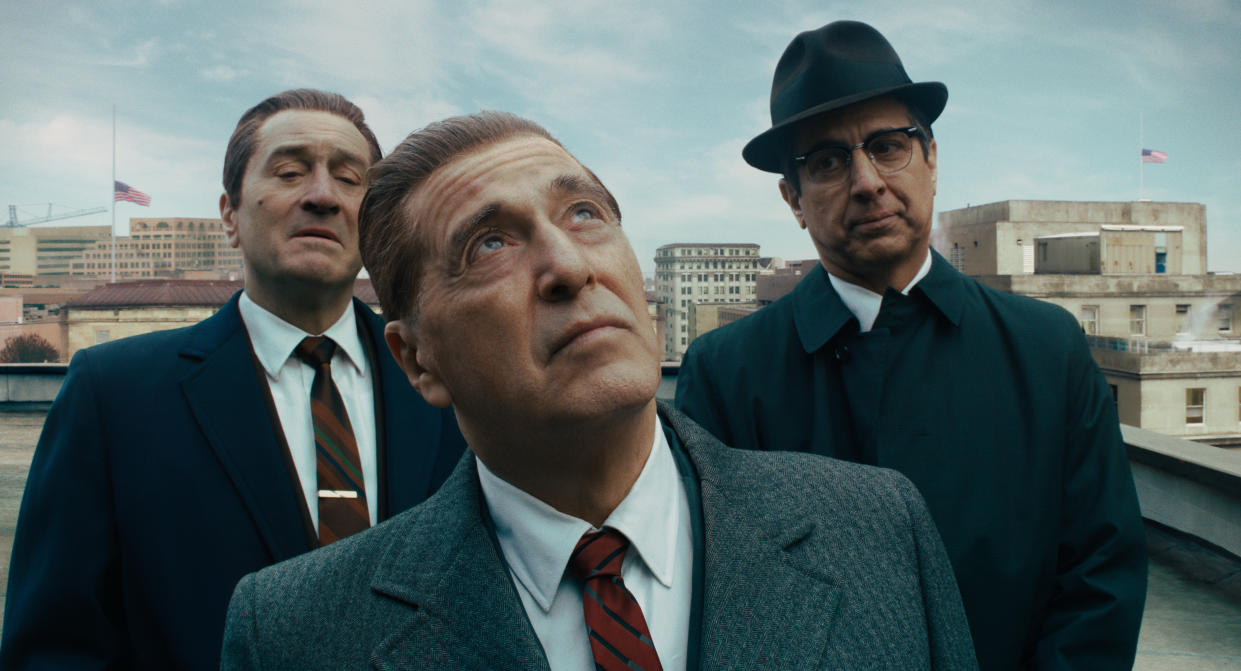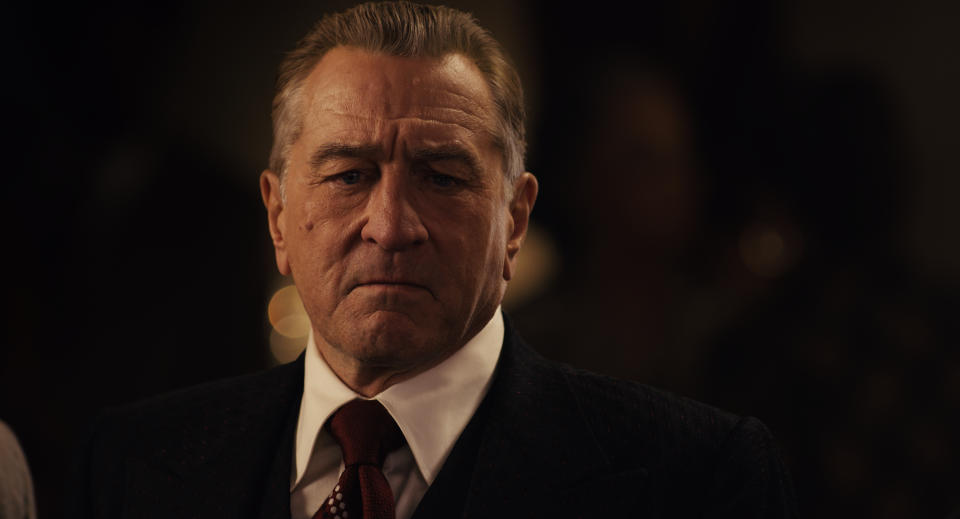REVIEW: The Irishman is such great cinema, its 3.5-hour runtime doesn't feel all that long

The subject of The Irishman – the Italian-American Mafia during a period spanning from 1949 to 2000 – may not be immediately relatable for us in Asia. After all, the film is based on real-life characters and events, set in a very specific milieu. But with auteur Martin Scorsese directing a cast of legendary Hollywood veterans that he’s previously worked with, it’s compelling cinema with great characters.
Based on the book I Heard You Paint Houses by Charles Brandt, the film is three and a half hours long (yes, you read that right, it’s longer than the longest Lord Of The Rings film!) It’s therefore a relief that The Irishman can be watched on Netflix, in the comfort of your home, where you can pause any time for a toilet break. Despite the seemingly daunting length, the film will keep you absorbed throughout with Scorsese’s masterful directing and the cast’s nuanced performances.
Scorsese reunites with Robert De Niro and Joe Pesci, who also starred in two of his previous mobster films, Goodfellas (1990) and Casino (1995). The Irishman marks the first time that Scorsese worked with Al Pacino, who himself played the iconic Mafia don Michael Corleone in the Godfather trilogy, the second film of which also starred De Niro. Between the director and the actors, they have tons of experience portraying gangsters.

Netflix was a natural home for The Irishman, despite Scorsese having criticised people for watching films at home over choosing the magic of the theatrical experience. Because the film required de-ageing CGI technology that could turn the over-70-year-old actors into young looking characters half their real ages, the budget ballooned to US$175 million. The original producers, Paramount and STX, sought a buyer to foist the project onto, and only Netflix had the deep coffers to bankroll it. Of course, that The Irishman could generate Oscar buzz (and it has) probably factored into Netflix’s calculations.
The Irishman weaves a narrative of the life of alleged Mafia hitman Frank Sheeran (De Niro), from the time he starts working for the Bufalino crime family after his WWII service till he ends up in a nursing home as an old man in his eighties. The film has a three-layered structure, each of the interlacing layers zooming in on a particular time period in Frank’s life.

Frank is introduced to a life of crime when he meets Mafia don Russell Bufalino (Pesci). Russell later assigns Frank to the entourage of Jimmy Hoffa (Pacino), a popular, influential union leader who turns out to have sinister links to the criminal underworld.
For me, never having watched the aforementioned acclaimed gangster films, I thought the tone of The Irishman would be heavy and gloomy, given the subject matter. I was pleasantly surprised that the film balances the grim violence and dark storyline by suffusing humour throughout. Pacino in particular stood out for me, with his comedic turns as a cantankerous boss who rails at his buffoonish minions for unknowingly leaving law enforcers a trail of evidence incriminating him.
It was a fascinating look at the politics and inner workings of organised crime, while never glamorising the Mafia. The film has a device where mobster characters are introduced by the horrific ways in which they die, through onscreen text that appears with these characters. And Frank’s daughter Peggy (Anna Paquin) serves as the story’s conscience as the audience sees through her eyes the journey of her father, a truly terrible human being navigating the underbelly of mobster society.



